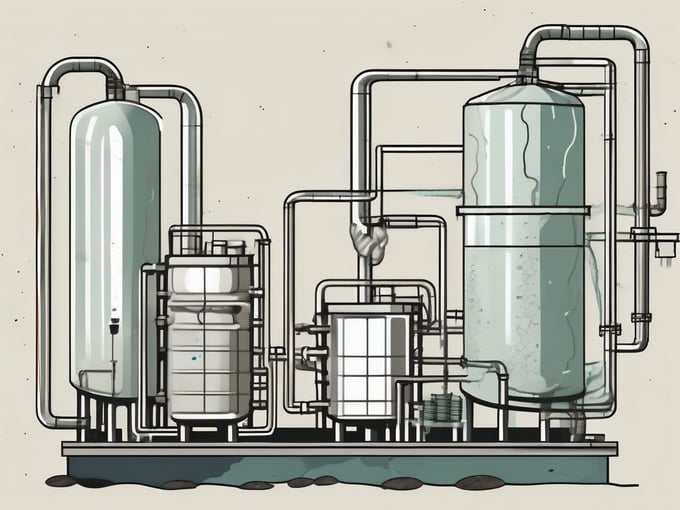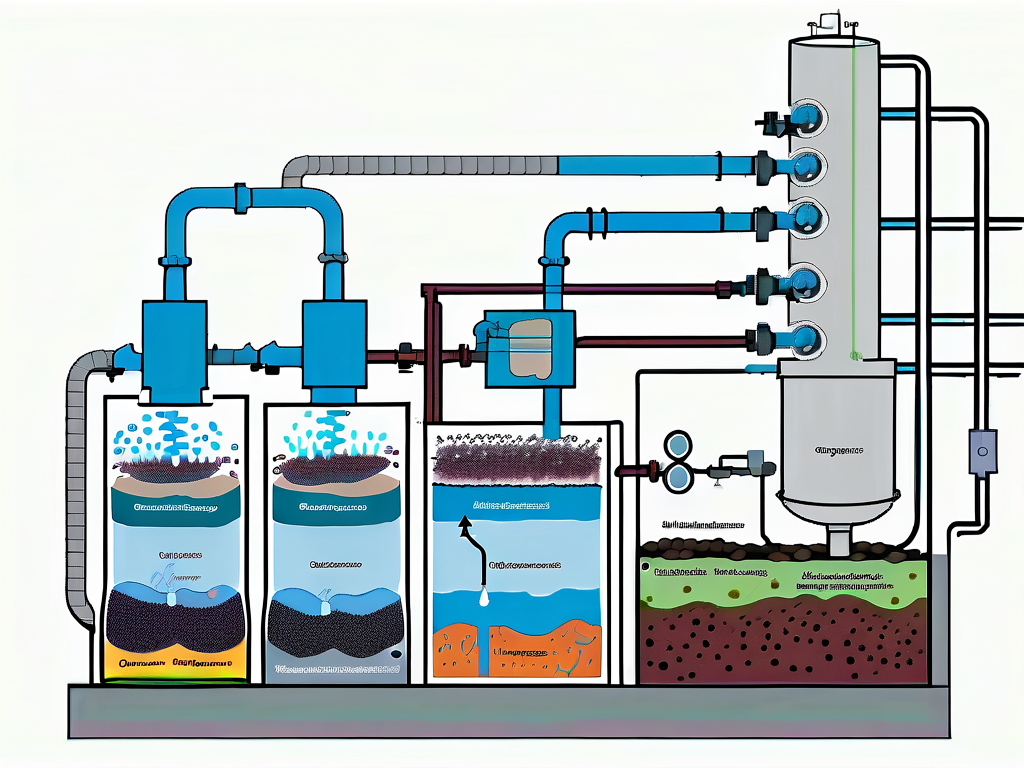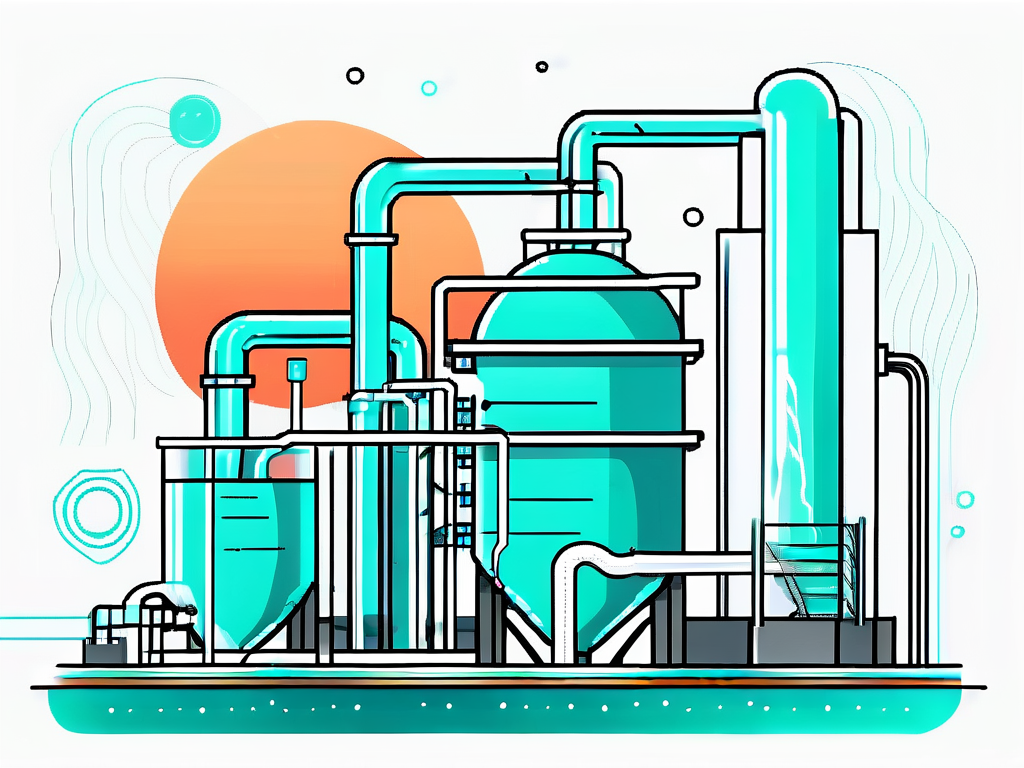
Activated Sludge: Wastewater Treatment Explained
The activated sludge process is a type of wastewater treatment that uses aeration and a biological floc composed of bacteria and protozoa to degrade organic material. This process is crucial for maintaining the health of our waterways and ecosystems, as it helps to remove harmful pollutants from wastewater before it is discharged back into the environment. This article will provide an in-depth look at the activated sludge process, its components, and its role in wastewater treatment.
Wastewater treatment is a complex process that involves several stages, each designed to remove different types of pollutants. The activated sludge process is typically used in the secondary treatment stage, where it helps to break down organic matter through biological activity. Despite its complexity, this process is widely used due to its effectiveness and versatility, as it can be adapted to treat a wide range of wastewater types and pollutant loads.
History and Development of the Activated Sludge Process
The activated sludge process was first developed in the early 20th century, as a response to the growing need for more effective wastewater treatment methods. The process was initially tested in Manchester, England, and its success led to its widespread adoption around the world. Since then, the process has been continuously refined and improved, with new technologies and techniques being introduced to enhance its performance and efficiency.
One of the major advancements in the activated sludge process was the introduction of aeration, which significantly improved the process's ability to degrade organic matter. Aeration provides the oxygen necessary for the bacteria and protozoa in the sludge to metabolize organic compounds, turning them into carbon dioxide, water, and other byproducts. This development made the activated sludge process much more effective and efficient, and it remains a key component of the process today.
Early Innovations
The early innovations in the activated sludge process were largely driven by trial and error, as scientists and engineers experimented with different techniques to enhance the process's effectiveness. These early innovations included the use of different types of aeration systems, the introduction of return sludge, and the development of secondary clarifiers to separate the treated water from the sludge.
These innovations were crucial in shaping the activated sludge process as we know it today. They helped to improve the process's efficiency and reliability, making it a viable option for large-scale wastewater treatment. Today, the activated sludge process is used in wastewater treatment plants around the world, treating billions of gallons of wastewater every day.
Modern Advances
Modern advances in the activated sludge process have focused on enhancing the process's efficiency and sustainability. These advances include the development of advanced aeration systems that use less energy, the introduction of new types of bacteria that can degrade more complex organic compounds, and the use of computer models to optimize the process.
These advances have helped to make the activated sludge process more sustainable and cost-effective, while also improving its ability to treat a wider range of pollutants. Despite these advances, there is still much research being done to further improve the process, with a focus on reducing energy use, improving sludge management, and enhancing the process's ability to remove emerging pollutants.
Components of the Activated Sludge Process
The activated sludge process consists of several key components, each playing a crucial role in the treatment of wastewater. These components include the aeration tank, the return sludge system, the secondary clarifier, and the sludge handling system. Each of these components is designed to facilitate a specific part of the process, and they work together to ensure the effective treatment of wastewater.

The aeration tank is where the activated sludge process takes place. This tank is filled with wastewater and activated sludge, and it is aerated to provide the oxygen necessary for the bacteria and protozoa in the sludge to metabolize organic compounds. The return sludge system is used to recycle some of the activated sludge back into the aeration tank, helping to maintain a high concentration of microorganisms in the tank.
Aeration Tank
The aeration tank is the heart of the activated sludge process. It is here that the wastewater is mixed with activated sludge and aerated to promote the growth of bacteria and protozoa. The aeration tank is typically a large, open tank that can hold several thousand gallons of wastewater and sludge.
The aeration in the tank is usually provided by diffusers that release small bubbles of air into the tank. This aeration not only provides the oxygen necessary for the bacteria and protozoa to metabolize organic compounds, but it also helps to keep the sludge suspended in the wastewater, ensuring that all the microorganisms have access to the organic matter in the wastewater.
Return Sludge System
The return sludge system is a crucial component of the activated sludge process, as it helps to maintain a high concentration of microorganisms in the aeration tank. This system works by pumping a portion of the activated sludge from the secondary clarifier back into the aeration tank. This recycled sludge is rich in bacteria and protozoa, and it helps to kickstart the degradation of organic matter in the incoming wastewater.
The amount of sludge returned to the aeration tank is carefully controlled to ensure that the concentration of microorganisms in the tank remains optimal. Too much sludge can lead to overcrowding and competition for resources, while too little sludge can result in insufficient degradation of organic matter. The return sludge system is therefore a crucial part of the process, as it helps to balance the microbial population in the aeration tank.
Role of Microorganisms in the Activated Sludge Process
Microorganisms play a crucial role in the activated sludge process, as they are responsible for the degradation of organic matter in the wastewater. These microorganisms, which include bacteria, protozoa, and other microscopic organisms, metabolize the organic compounds in the wastewater, turning them into carbon dioxide, water, and other byproducts.
The specific types of microorganisms present in the activated sludge can vary depending on the nature of the wastewater and the specific conditions in the aeration tank. However, most activated sludge contains a diverse mix of bacteria, protozoa, and other microorganisms, all working together to degrade the organic matter in the wastewater.
Bacteria
Bacteria are the primary microorganisms involved in the activated sludge process. These bacteria metabolize the organic compounds in the wastewater, using them as a source of energy and nutrients. The byproducts of this metabolism, which include carbon dioxide and water, are then released back into the environment.
The specific types of bacteria present in the activated sludge can vary widely, but they typically include a mix of aerobic and anaerobic bacteria. Aerobic bacteria require oxygen to metabolize organic compounds, while anaerobic bacteria can metabolize organic compounds in the absence of oxygen. The balance between these two types of bacteria is crucial for the effective treatment of wastewater, as it helps to ensure that all types of organic compounds are degraded.
Protozoa
Protozoa are another important group of microorganisms involved in the activated sludge process. These microscopic organisms feed on bacteria and other microorganisms in the sludge, helping to control the microbial population in the aeration tank. By consuming excess bacteria, protozoa help to prevent overcrowding and competition for resources, ensuring that the microbial population remains balanced and healthy.
Protozoa also play a crucial role in the clarification process, as they help to aggregate the bacteria and other microorganisms into larger flocs. These flocs are easier to separate from the treated water in the secondary clarifier, making the clarification process more efficient. Protozoa are therefore a crucial part of the activated sludge process, as they help to maintain the health and balance of the microbial population, while also enhancing the efficiency of the clarification process.
Stages of the Activated Sludge Process
The activated sludge process consists of several stages, each designed to facilitate a specific part of the treatment process. These stages include the aeration stage, the settling stage, and the return sludge stage. Each of these stages plays a crucial role in the treatment of wastewater, and they work together to ensure the effective degradation of organic matter.
The aeration stage is where the degradation of organic matter takes place. In this stage, the wastewater is mixed with activated sludge and aerated to promote the growth of bacteria and protozoa. The settling stage is where the treated water is separated from the sludge, while the return sludge stage is where a portion of the sludge is recycled back into the aeration tank. Each of these stages is crucial for the effective treatment of wastewater, and they must be carefully managed to ensure the optimal performance of the process.
Aeration Stage
The aeration stage is the heart of the activated sludge process. In this stage, the wastewater is mixed with activated sludge and aerated to promote the growth of bacteria and protozoa. The aeration provides the oxygen necessary for the bacteria and protozoa to metabolize the organic compounds in the wastewater, turning them into carbon dioxide, water, and other byproducts.
The aeration stage is typically carried out in a large, open tank, where the wastewater and sludge can be thoroughly mixed and aerated. The duration of the aeration stage can vary depending on the nature of the wastewater and the specific conditions in the aeration tank, but it typically lasts for several hours. During this time, the bacteria and protozoa in the sludge work to degrade the organic matter in the wastewater, preparing it for the next stage of the process.
Settling Stage
The settling stage is where the treated water is separated from the sludge. This stage is typically carried out in a secondary clarifier, a large tank where the treated water and sludge are allowed to settle. The sludge, which is heavier than the water, settles to the bottom of the tank, while the treated water rises to the top.
The treated water is then removed from the top of the tank and discharged back into the environment, while the sludge is collected from the bottom of the tank and sent to the sludge handling system. The settling stage is crucial for the effective treatment of wastewater, as it allows for the separation of the treated water from the sludge, ensuring that only clean, treated water is discharged back into the environment.
Return Sludge Stage
The return sludge stage is where a portion of the sludge is recycled back into the aeration tank. This stage is crucial for maintaining a high concentration of microorganisms in the aeration tank, as it helps to ensure that there are enough bacteria and protozoa to degrade the organic matter in the incoming wastewater.
The return sludge stage is typically carried out using a return sludge pump, which pumps a portion of the sludge from the secondary clarifier back into the aeration tank. The amount of sludge returned to the tank is carefully controlled to ensure that the concentration of microorganisms in the tank remains optimal. The return sludge stage is therefore a crucial part of the activated sludge process, as it helps to maintain the health and balance of the microbial population in the aeration tank.
Advantages and Limitations of the Activated Sludge Process
The activated sludge process has several advantages that have contributed to its widespread use in wastewater treatment. These advantages include its effectiveness in degrading organic matter, its versatility in treating a wide range of wastewater types, and its ability to be scaled up or down to accommodate different treatment capacities. However, the process also has some limitations, including its energy intensity, its need for careful management, and its production of sludge that must be properly handled and disposed of.
Despite these limitations, the activated sludge process remains a cornerstone of wastewater treatment due to its effectiveness and versatility. With ongoing research and development, it is likely that the process will continue to be refined and improved, further enhancing its performance and sustainability.
Advantages
The activated sludge process is highly effective in degrading organic matter, making it a crucial tool in the treatment of wastewater. The process uses a biological floc composed of bacteria and protozoa to metabolize organic compounds, turning them into carbon dioxide, water, and other byproducts. This biological activity is highly effective in breaking down organic matter, helping to remove harmful pollutants from wastewater before it is discharged back into the environment.
Another advantage of the activated sludge process is its versatility. The process can be adapted to treat a wide range of wastewater types and pollutant loads, making it a flexible and versatile tool in wastewater treatment. The process can also be scaled up or down to accommodate different treatment capacities, making it suitable for use in both small and large-scale wastewater treatment plants.
Limitations
One of the main limitations of the activated sludge process is its energy intensity. The process requires a significant amount of energy to aerate the wastewater and sludge, making it one of the more energy-intensive wastewater treatment processes. This energy use can contribute to the process's operational costs and its environmental impact, making it less sustainable than some other treatment methods.
Another limitation of the activated sludge process is its need for careful management. The process relies on a delicate balance of conditions in the aeration tank, including the concentration of microorganisms, the level of aeration, and the amount of organic matter in the wastewater. These conditions must be carefully managed to ensure the effective treatment of wastewater, which can require significant time and resources.
Future of the Activated Sludge Process
The future of the activated sludge process looks promising, with ongoing research and development aimed at enhancing the process's efficiency and sustainability. These advancements include the development of advanced aeration systems that use less energy, the introduction of new types of bacteria that can degrade more complex organic compounds, and the use of computer models to optimize the process.

With these advancements, it is likely that the activated sludge process will continue to play a crucial role in wastewater treatment for many years to come. As our understanding of the process and its microorganisms continues to grow, we can expect to see further improvements in the process's performance and sustainability, helping to ensure the health of our waterways and ecosystems for future generations.



